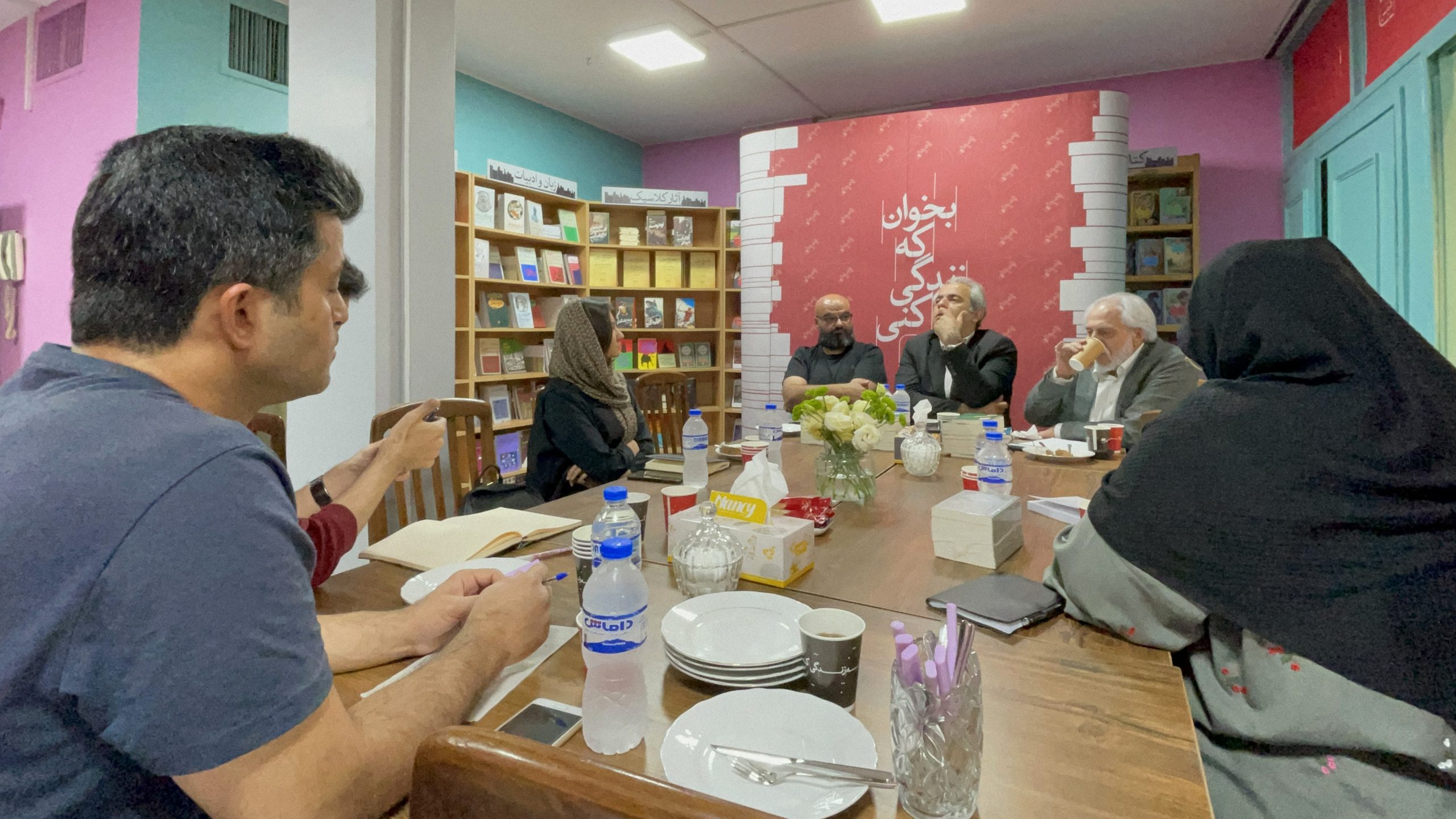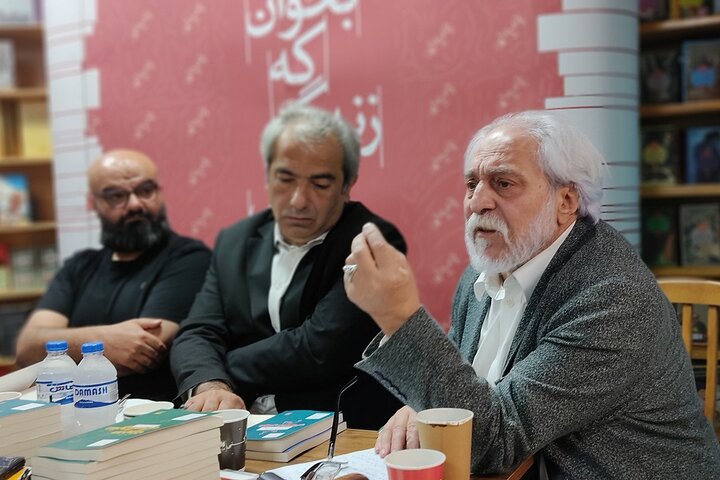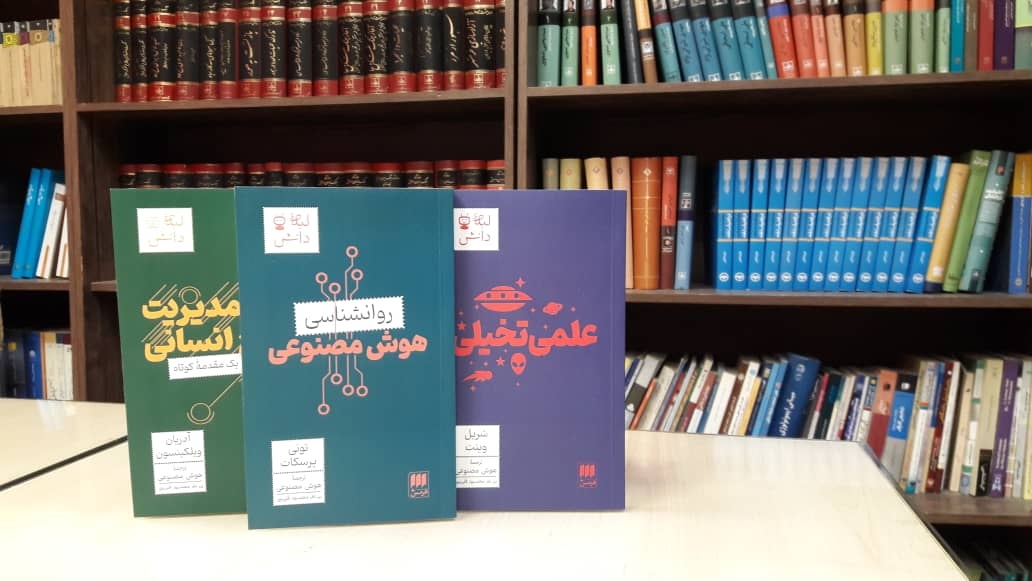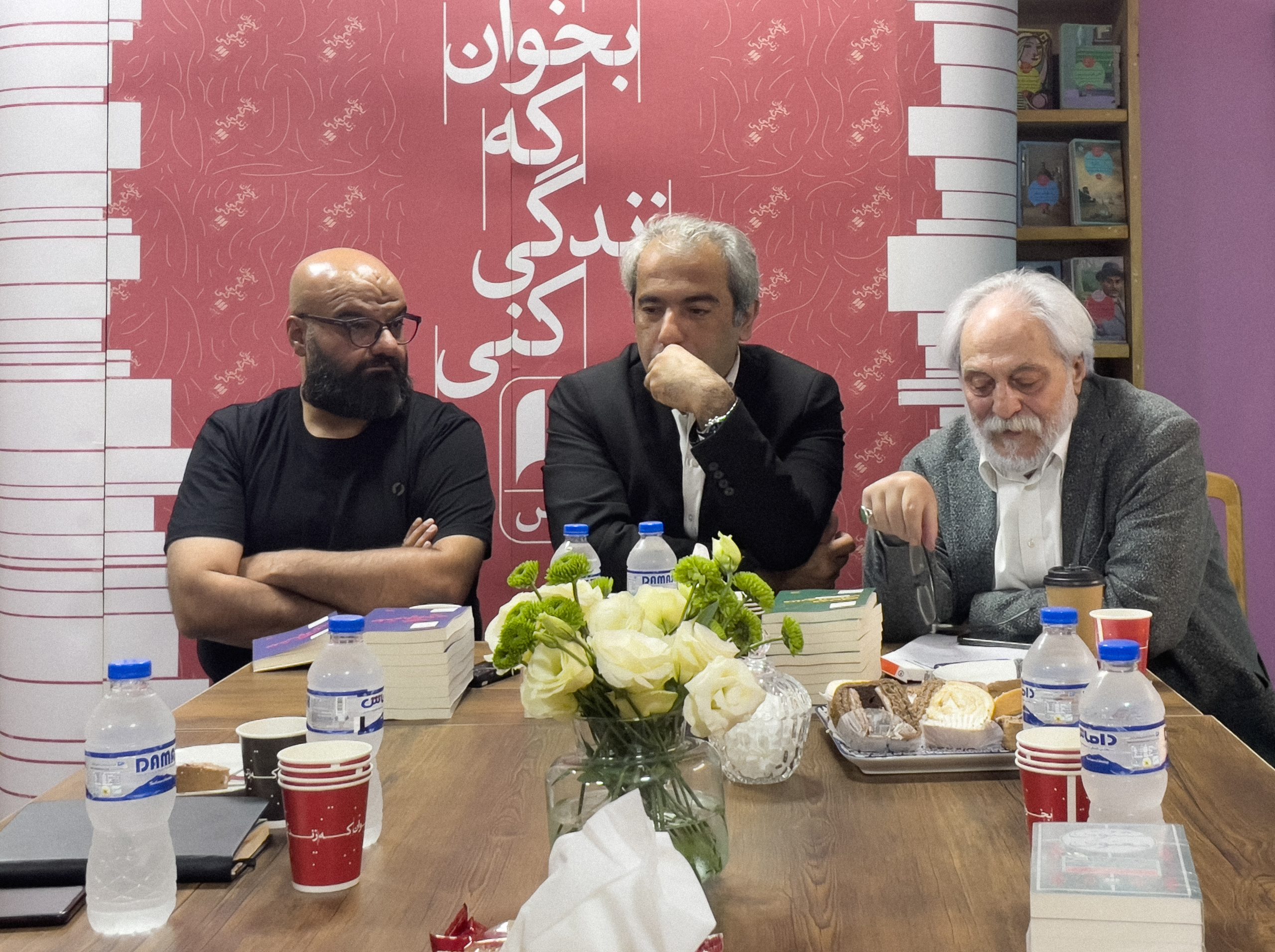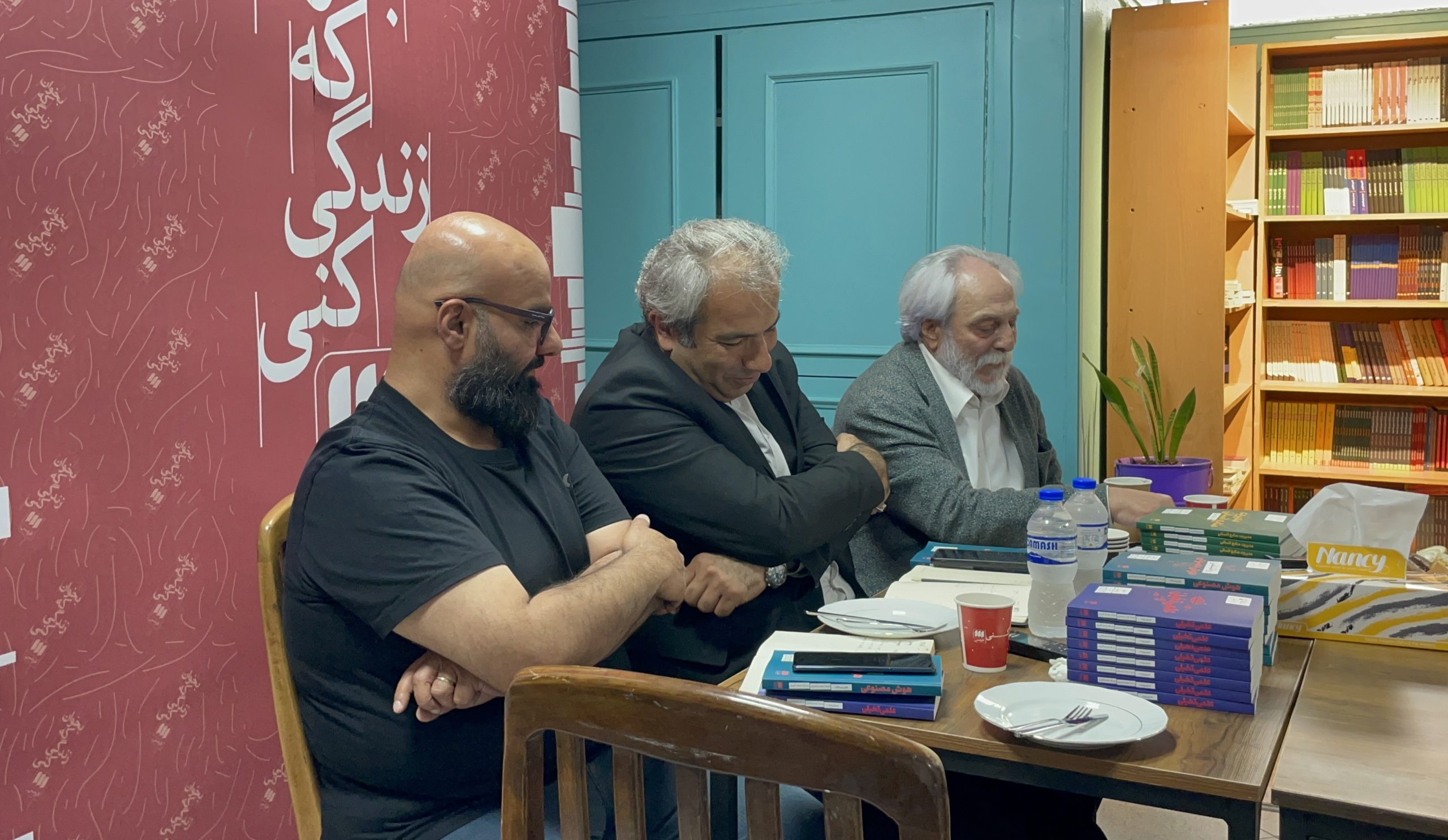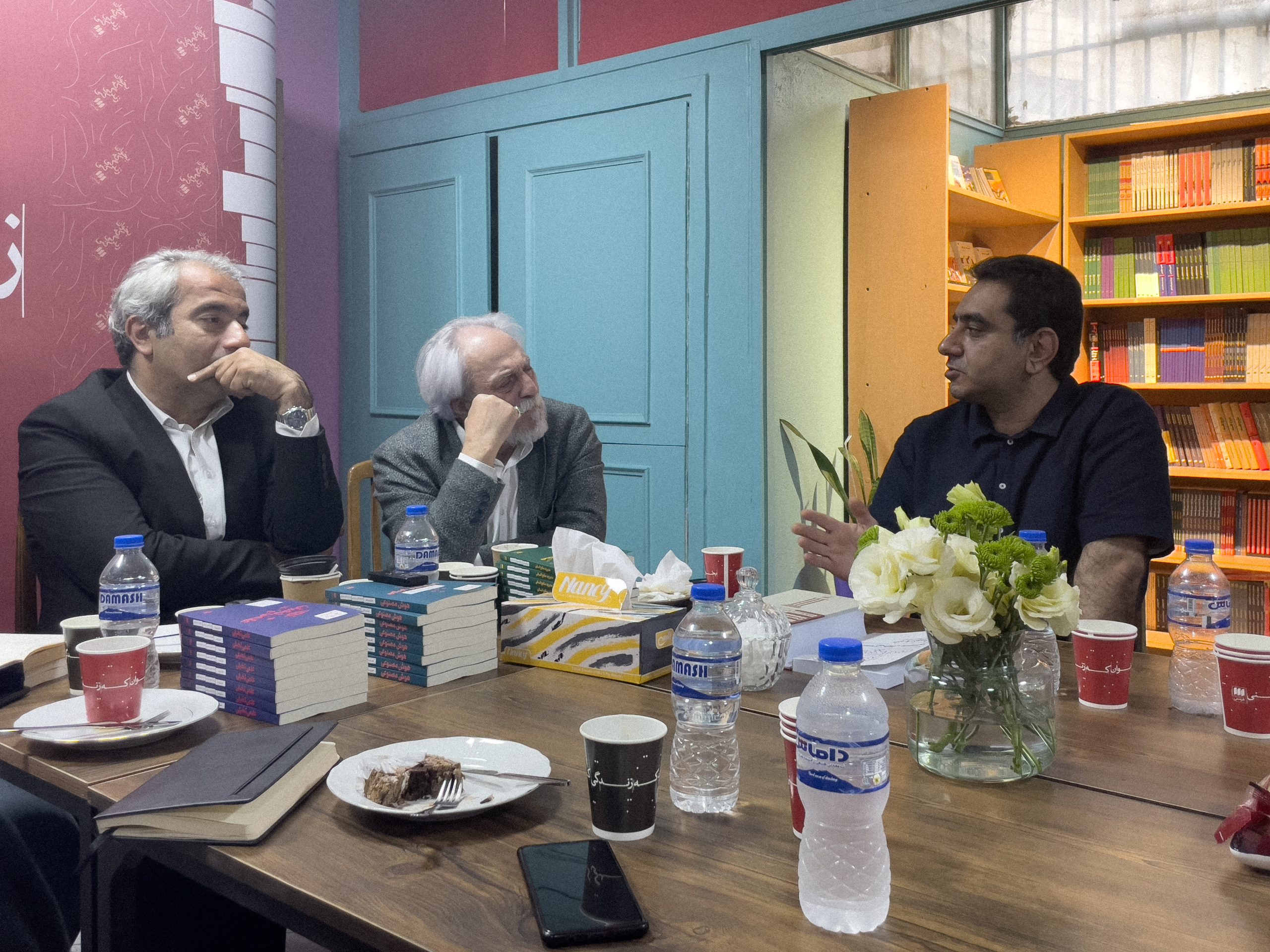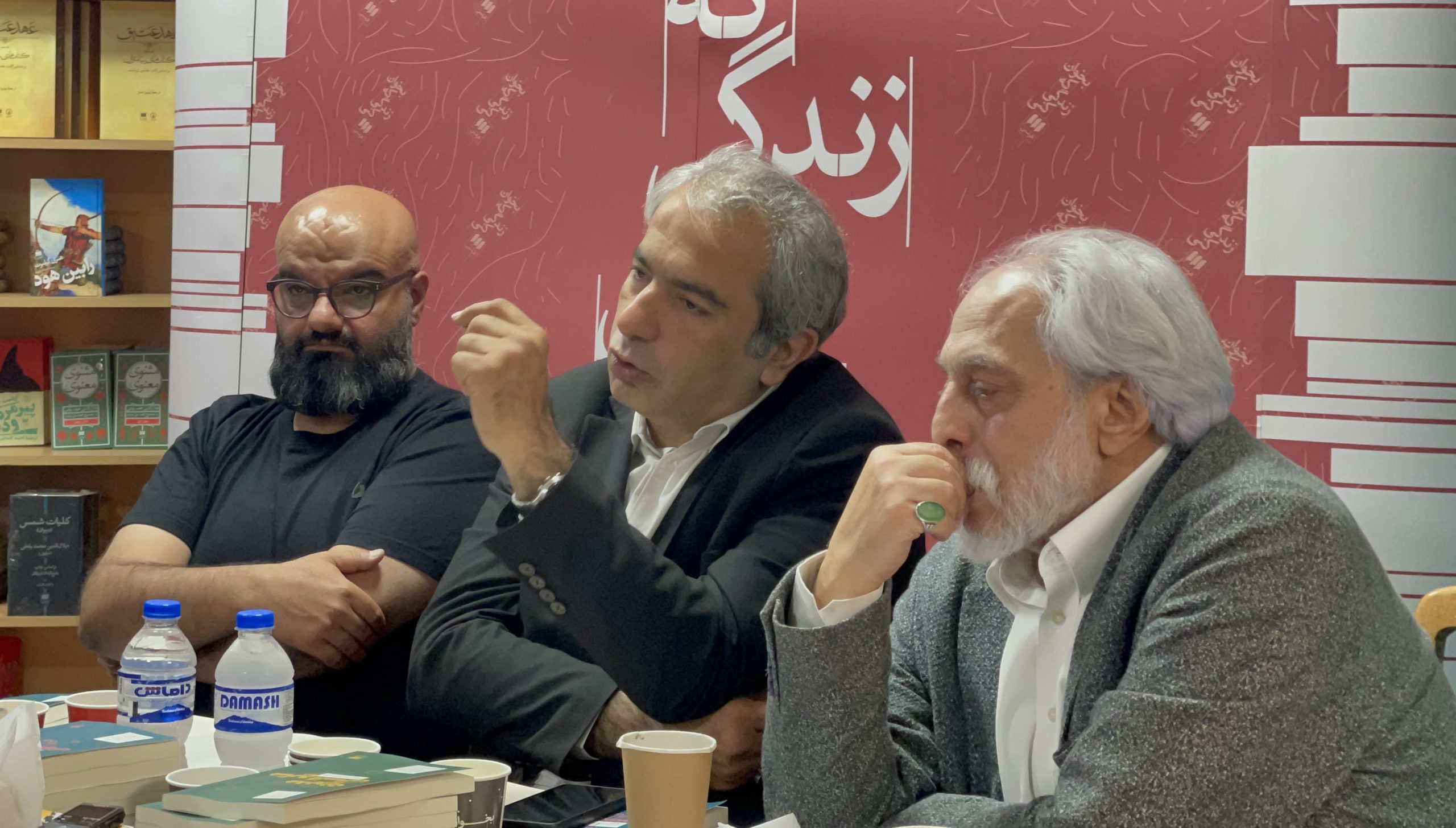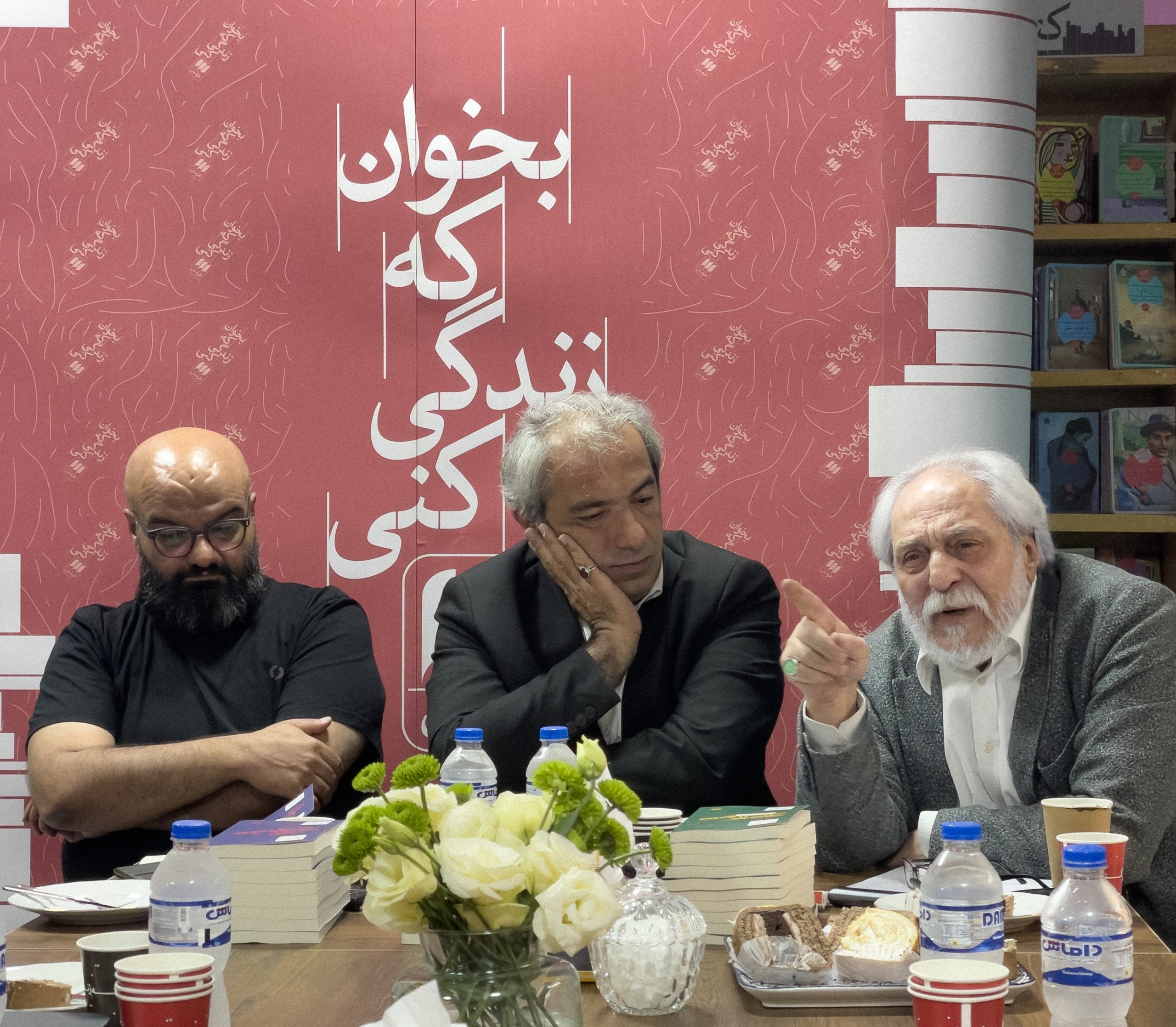
HERMES PUBLISHING ANNOUNCES:
In a groundbreaking move that has sent ripples through Iran’s literary community, Hermes Publishing House hosted an unveiling ceremony for their innovative “Edge of Knowledge” book series on May 3, 2025. This pioneering collection represents one of the first structured attempts in Iran to integrate artificial intelligence into the traditional book translation process.
The event, held at Hermes Publishing headquarters in Tehran, brought together key figures from Iran’s literary ecosystem: Mehdi Firouzan, CEO of BookCity Cultural Institute; Morteza Kardar, Director of Hermes Publishing; and Mahmoud Gholipour, the project’s series editor and chief supervisor. The announcement of AI-assisted translations immediately triggered intense debate among publishers, translators, and readers across the country.
“Since yesterday when news of this initiative broke, we’ve received hundreds of responses—many critical,” noted Kardar at the beginning of the session. “This actually pleases me because it demonstrates how deeply people care about the future of publishing in Iran. The passionate reactions show that our industry remains vibrant and engaged.”
The concerns raised by critics centered on several pressing questions: Does this mark the beginning of the end for human translators? How will this affect the publishing industry’s economics? Where exactly are we in this technological transformation?
Mehdi Firouzan, whose BookCity Cultural Institute operates one of Iran’s most prominent bookstore chains and cultural centers, revealed that he had been the driving force behind the project. “We felt compelled to take proactive steps rather than wait for others to define this space,” he explained. “This is fundamentally about future-proofing—sooner or later, the entire publishing and translation industry will need to confront this technology.”
Drawing on his background in cultural entrepreneurship, Firouzan placed the AI revolution in historical context: “Since 1955, after World War II, when concepts like deep learning and machine intelligence first emerged, approximately 24 transformative technologies have appeared. Language remains one of the most fascinating among them, but like all technologies, none have been immune to misuse.”
He cited examples of how technologies with positive potential sometimes yield unexpected negative consequences: “Agriculture that could have eliminated hunger in Africa sometimes increased poverty instead. Nuclear energy developed for peaceful purposes was transformed into weapons. We can only anticipate the implications of AI if we actively engage with it.”
Firouzan emphasized that the initiative extends beyond mere economic efficiency. “The fundamental issue today is ethics in artificial intelligence. Who should determine its ethical foundations? Do Western developers share our ethical frameworks? If not, how can we influence its development?”
He articulated concerns about linguistic and cultural sovereignty: “In linguistics, if we want our mother tongue to be an instrument for knowledge production, its vocabulary must have scientific capacity. When we think in Latin terms, we cannot be drivers of science. Today’s AI is being developed by people with different cultural backgrounds. If we don’t enter this field, our children’s cultural and linguistic identity will undergo transformation beyond our control.”
The urgency of his message became clear as he explained AI’s rapid evolution: “Today’s AI doesn’t just receive and process—it’s reached a stage of inference. As Descartes said, ‘I think, therefore I am.’ We’re now facing artificial intelligences that truly think. They play with themselves, learn beyond their programming, and reach capacities ten times their initial state.”
Most striking was his prediction about AI’s developmental trajectory: “From an evolutionary perspective, this technology is still in its early stages, but within two to three years, it may reproduce everything humans have created. This isn’t fantasy or fear—humanity’s civilizational data is now available to machines analyzing it at unprecedented speeds.”
Morteza Kardar provided insights into Hermes Publishing’s journey into AI territory, which began with translating and publishing “The Eye of the Master: A Social History of Artificial Intelligence” by Matteo Pasquinelli, a young Italian left-wing philosopher known for his critical perspective on technology.
Kardar outlined the project’s execution: “Our main goal today is to share the experiences from a year of collaboration with 10-15 translators. Some translators left the project, but we persisted. Book selection happened through three channels—our own research, translator recommendations, and Mr. Firouzan’s suggestions.”
He emphasized that the current project encompasses approximately ten books, with one already published and others in final preparation. “Our objectives include presenting the world’s most current scientific works, strengthening Persian language in the technology domain, and elevating translation quality with new tools.”
Mahmoud Gholipour, the series editor for “Edge of Knowledge with Artificial Intelligence,” shared both personal and professional perspectives: “When I received this proposal, one friend told me I was entering a great gamble. I even received calls suggesting that all my translations would now be suspect.”
He clarified an important linguistic context: “Machine translation, translation memory, and AI translation emerged from translation studies, not computer science. However, their development is now primarily driven by computer engineers, creating a disconnect from translators’ actual needs.”
Gholipour articulated the unique challenges of Persian language: “Machine translation lacks human spirit. Translation isn’t merely word replacement—it’s transferring feeling, tone, cultural structure, and textual meaning. Persian language, with its structural flexibility and ability to create multiple meanings with fixed vocabulary, poses significant challenges for algorithms. Compared to languages like English or French, Persian grammatical structures are far more complex.”
The project assembled a diverse translation team: four professional translators, four elite students from the University of Tehran, and two individuals from language institutes. The translation process comprised three phases: raw AI translation, editor-revised version, and final version after specialized editing.
The findings were revealing: The difference between machine and human translation ranged from 60-70%. Philosophical texts required up to 75% correction, historical texts 68%, and in literary texts, over 82% of the textual feeling was not properly conveyed.
Gholipour outlined three main project goals: training a new generation of translators committed to Persian language, improving the quality of terminology equivalents, and preserving linguistic authenticity against machine translation deviations. He emphasized the need for connecting the publishing industry with academia, developing a national linguistic corpus, continuous education, and intelligent quality control.
The unveiled books from this series will be available at the upcoming Tehran International Book Fair, offering readers a chance to judge the results for themselves. This initiative marks a significant milestone in Iran’s publishing history—a moment when tradition meets technology in an attempt to navigate the complex future of translation in the digital age.
As BookCity and Hermes Publishing step boldly into this controversial territory, the ultimate question remains: Can artificial intelligence become a tool that enhances rather than diminishes the rich literary tradition of Persian language publishing? The “Edge of Knowledge” series represents not just translated books, but a fundamental experiment in cultural adaptation and technological integration.


